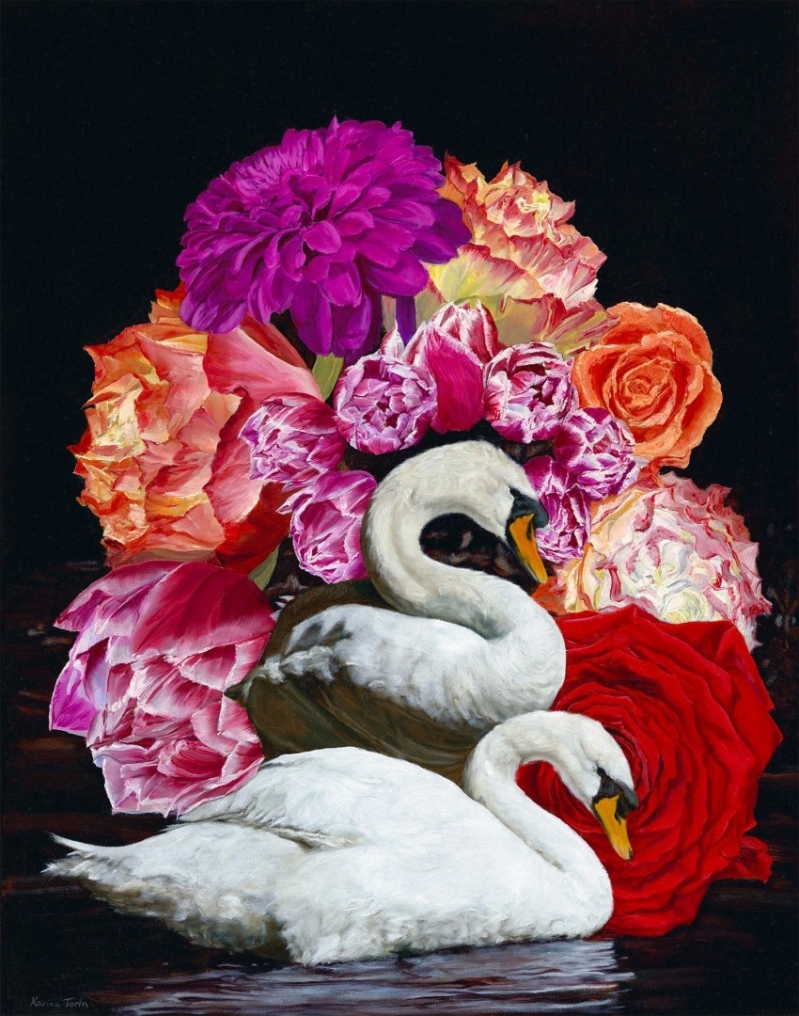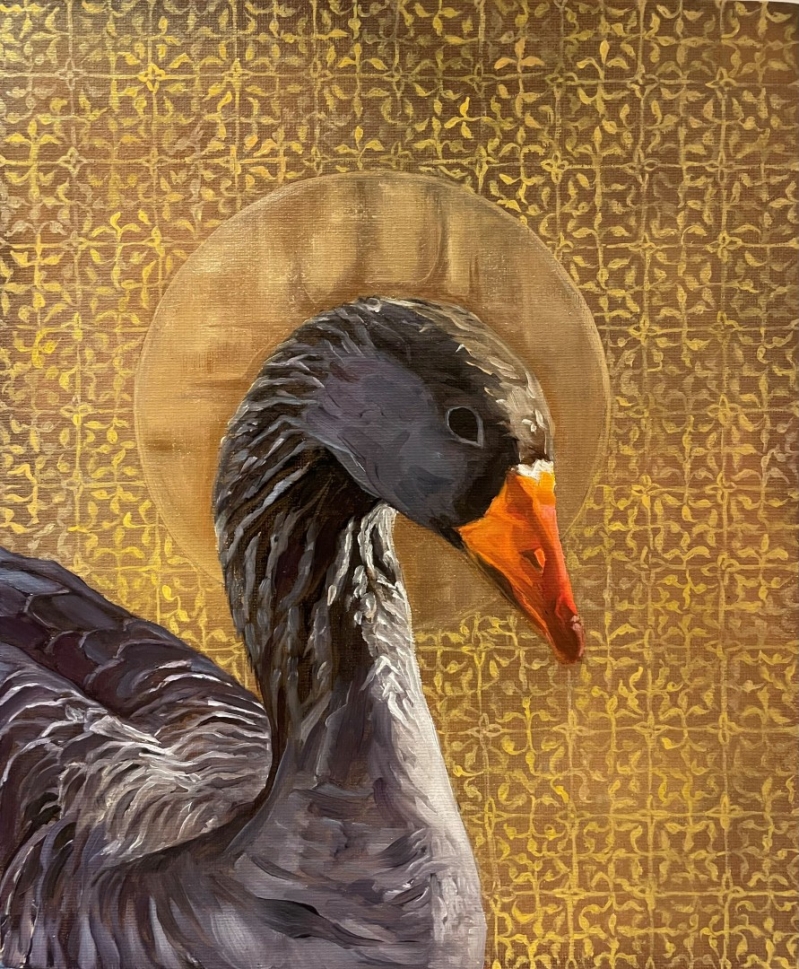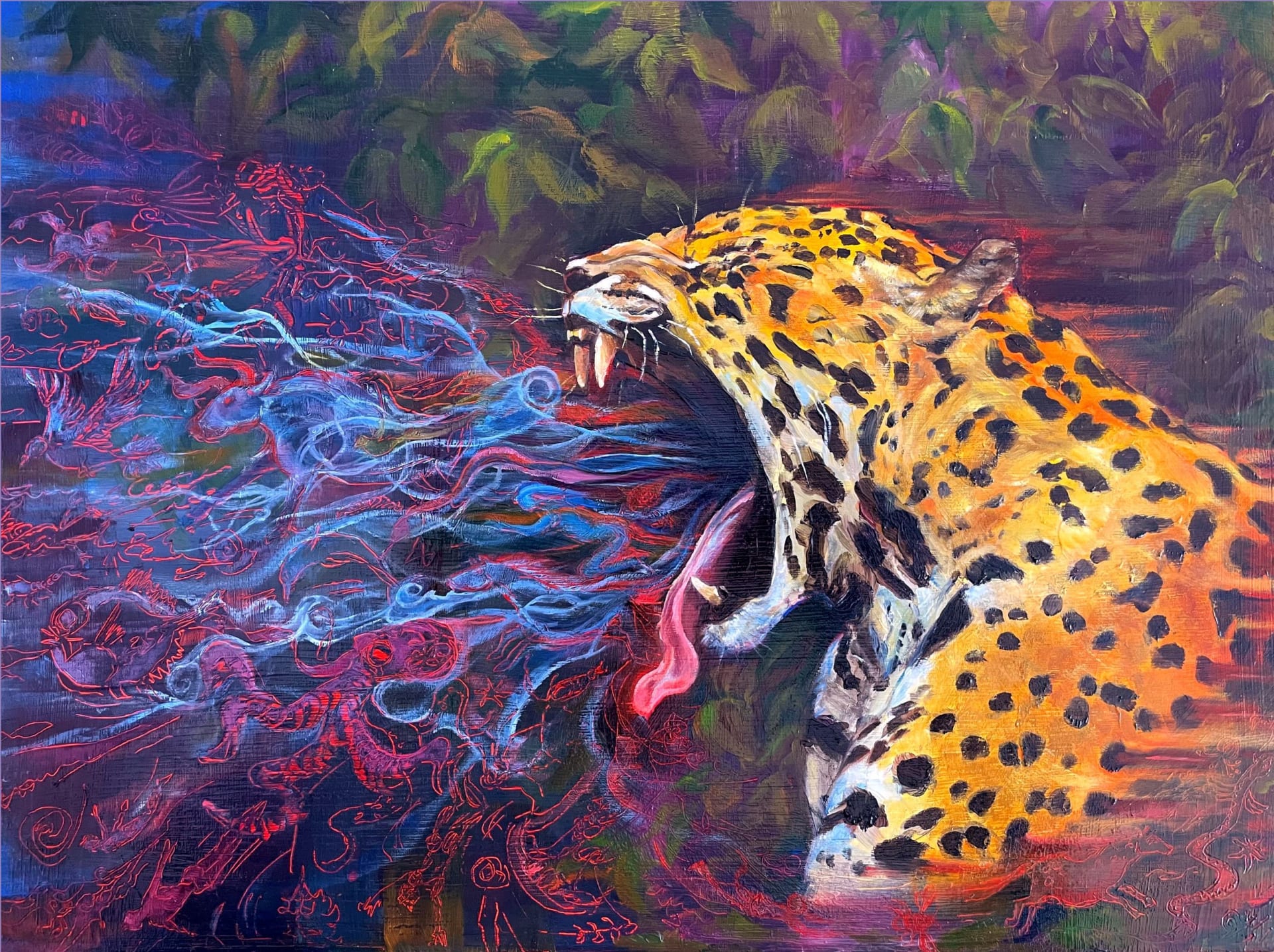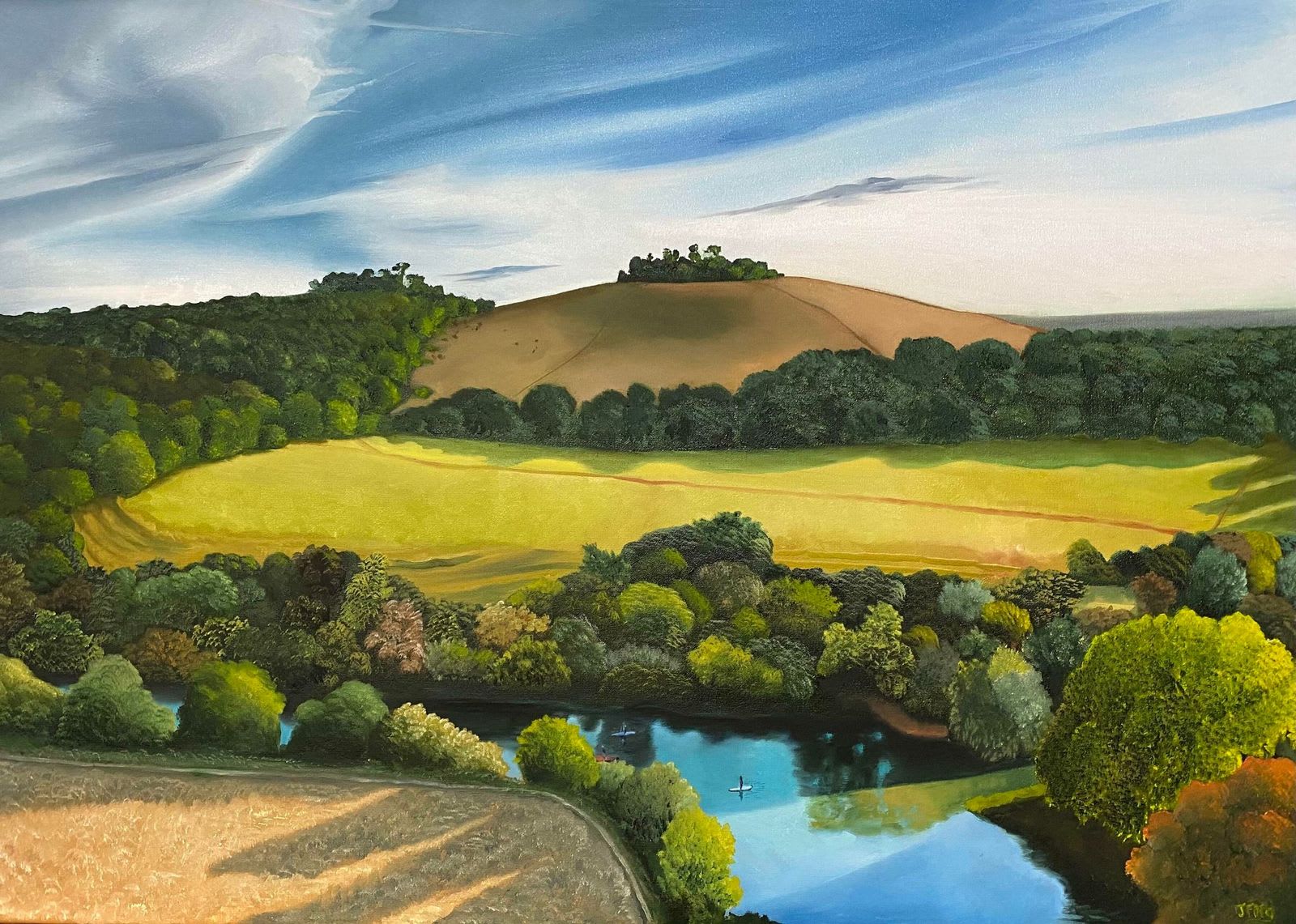At her debut exhibition with Oxfordshire Artweeks this May, Karina Tarin showed a series of vibrant and intriguing paintings inspired by the dual wonders of nature and myth – the nourishment she believes we need to travel the bumpy road of life.
“I had a life-threatening illness and subsequent above-knee amputation which was a huge shock,” says Karina. “It was a momentous trigger in re-evaluating the things that are important in life. Having being confined to hospital for months, I was left longing for the sound of birds and wind in the trees, the feel of the sun, or sting of rain on my skin, the smells and the ever-changing visual feast of the natural world. As soon as I was able, I began to spend as much time as possible outside, walking in the wild areas of Oxford. At first, I went in my wheelchair, later as part of my physio with my prosthetic leg, and I found it healing. Every day there were different things to see - and so much change with the seasons.
 I’ve always loved nature, but the more I really looked, the more my wonder grew at the everyday things we take for granted – the glossy crows and jackdaws, the plump perfection of the mallards, swans and geese on the river, the shapes of the trees, and even the exuberant nettles, cow parsley and other weeds. I began to paint them, to celebrate and prolong my interaction with the nature I was seeing every day; so ordinary, and yet so perfect. The more I painted, the more closely I looked at the natural world and the more I looked at the wildlife around me, the more I wanted to paint.
I’ve always loved nature, but the more I really looked, the more my wonder grew at the everyday things we take for granted – the glossy crows and jackdaws, the plump perfection of the mallards, swans and geese on the river, the shapes of the trees, and even the exuberant nettles, cow parsley and other weeds. I began to paint them, to celebrate and prolong my interaction with the nature I was seeing every day; so ordinary, and yet so perfect. The more I painted, the more closely I looked at the natural world and the more I looked at the wildlife around me, the more I wanted to paint.
One of my paintings is called Oxford Swan. I have seen this swan many times on my walks near the river. The painting itself was based on a photograph of the same bird by local wildlife photographer Craig Williamson and when I saw it – the shapes, the plumage, the light and contrast – I just had to paint it. Sometimes nature comes pre-packaged as art. It felt like this was one of those times.
I’m especially drawn to painting birds and wings. It’s partly because of their beauty (their perfect plumage and sleek silhouettes) and partly their vibrant resilience. There’s a little longing on my part too, for the freedom of a pair of wings. Who wouldn’t want that?
There’s freedom to be had in our interactions with nature, and through stories too; much needed escapes from an increasingly digital world. We’ve always relied on the natural world around us, and from the dawn of communication, we’ve been telling stories. Tales of legendary creatures, shapeshifting beings, talking trees and untameable beasts all reflect our need to escape from the mundanity of daily existence into the magical ‘other’ of the natural and mythical world, and I have woven this mysticism into my paintings too.”
These include Duck of the Gods, an ode to the Mallard standing proud. Using gorgeous gold paint applied with a palette knife adds a regal light to purple feathers, and a mystical halo effect. “This painting is a tribute to her resplendent glory, and the beauty and resilience of all the wildlife we so often take for granted,” says Karina.
Karina’s birds often sport a halo or mythical headwear. For example, in The Protector, a heron wears a Celtic knotted tree crown. “Whilst researching the symbolism of herons, I was surprised to see them popping up frequently in religion and myth across the world,” continues Karina. “Common themes were independence, persistence, longevity, protection and a link with the Gods. This one is a protector, drawn from Celtic lore in particular, where herons adorned the shields of Celtic warriors as a sign of protection, and a heron was one incarnation of the shapeshifting Rhiannon, protector of lost travellers. The heron was also photographed in Oxford by @craign.williamson. Craig is a friend whom I met out walking by the rivers, and I am lucky that he has allowed me to use a number of his beautiful photographs as source images, which have provided huge inspiration for my paintings.
 I love the idea of shape-shifting, and another of my paintings, Flying Ointment, was inspired by the single sentence: ‘in Scandinavia some witches rode magpies or turned into them.’ A magpie as a shapeshifting witch; an intriguing idea. This started me thinking about the history of witches, and their ‘flying ointment’, a hallucinogenic ointment believed to have been used in European witchcraft from at the Early Modern period when, according to Wikipedia, detailed recipes for such preparations were recorded. As I researched the ingredients for flying ointment, I found a wealth of fascinating and potentially deadly plants and flowers, including black henbane, deadly nightshade, henbane bell, mandragora, and jimson weed. I love these kinds of myths and historical facts, and in my mind these flowers formed a halo around the magpie. I painted my witch-magpie wearing her flying ointment in this way: radiant, powerful and mischievous.”
I love the idea of shape-shifting, and another of my paintings, Flying Ointment, was inspired by the single sentence: ‘in Scandinavia some witches rode magpies or turned into them.’ A magpie as a shapeshifting witch; an intriguing idea. This started me thinking about the history of witches, and their ‘flying ointment’, a hallucinogenic ointment believed to have been used in European witchcraft from at the Early Modern period when, according to Wikipedia, detailed recipes for such preparations were recorded. As I researched the ingredients for flying ointment, I found a wealth of fascinating and potentially deadly plants and flowers, including black henbane, deadly nightshade, henbane bell, mandragora, and jimson weed. I love these kinds of myths and historical facts, and in my mind these flowers formed a halo around the magpie. I painted my witch-magpie wearing her flying ointment in this way: radiant, powerful and mischievous.”
“Not all of my paintings are local wildlife though,” she adds. “Breathing Life was inspired by myths of Amazonian shamanic leopards, and a visit to the Lascaux caves with their ancient paintings in France. The two came together in my mind to form this semi-divine leopard breathing all forms of life into the world, from Lascaux-inspired horses and bulls, to humans, the crab, octopus, bird and squid. There’s even a winged snake in there (in Amazonian ayahuasca art, all the snakes have wings).
I’ve also painted the Angel of the Thames inspired by a fantastic book, The Gifts by Liz Hyder, which opens with a huge pair of wings ripping from the shoulders of a young woman alone in a forest, and is largely about friendship and kindness. Although I haven’t seen her during my walks,” Karina admits, “there’s a myth that she appears to Londoners (and possibly others who live along the Thames) in times of need. If you look closely at the painting you will see Thames-growing plants, too; samphire, glasswort, sea purslane and eelgrass.”
Alongside oil and watercolour paintings of various sizes, Karina also shared a series of small paintings of British birds painted on 22ct gold leaf, created especially for Artweeks. “Gold is a theme that seems to be emerging in my work,” says Karina “It adds a bit of opulence, and helps to celebrate the wonder that is our natural world”.









